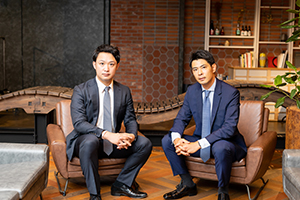
Vision
/Mission/
Corporate story
Vision/Mission

Realizing a digital world without wires through wireless power transfer
We contribute to the innovation of our customers who aspire "digitalization" through IoT by applying our WPT technologies to a wide range of fields such as factory automation, robotics, smart houses, and medical.
Value
Committed to our customers' success, exceed their expectations.
- We pursue the success of our customers' businesses.
- We value all of people involved with us and share the joy of success.
“Work hard, Play hard”
- We are all professionals, always think things through and work through to the end.
- We enjoy, together with our team, the process of reaching the goal, with spirit of pleasure.
Continue to create new value based on science and technology.
- We keep on making an impact on the world through science and technology.
- We value raw information and create value for the changing market.
Corporate Story
